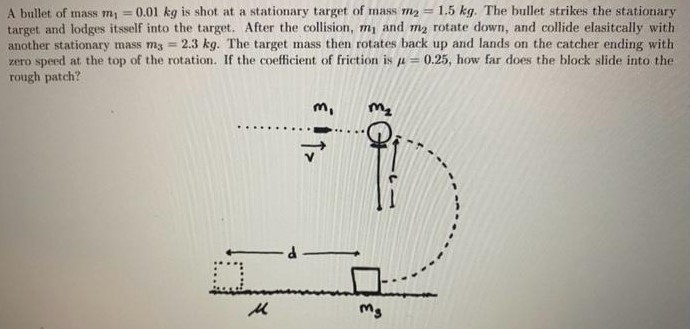A bullet of mass m1 = 0.01 kg is shot at a stationary target of mass m2 = 1.5 kg. The bullet strikes the stationary target and lodges itsself into the target. After the collision, m1 and m2 rotate down, and collide elasitcally with another stationary mass m3 = 2.3 kg. The target mass then rotates back up and lands on the catcher ending with zero speed at the top of the rotation. If the coefficient of friction is μ = 0.25, how far does the block slide into the rough patch?
